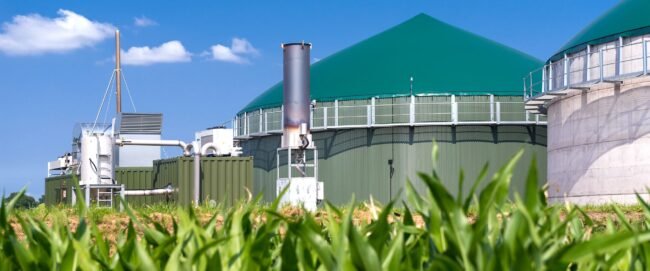Biomass energy is a key player in the transition to a sustainable and renewable energy future. As the world seeks to reduce its reliance on fossil fuels and mitigate climate change, biomass energy offers a promising solution by converting organic materials into valuable energy resources. This article explores the fundamentals of biomass energy, its benefits, technologies, and its role in advancing global sustainability.
What is Biomass Energy?
Biomass energy refers to the energy derived from organic materials, such as plants, agricultural residues, wood, and animal waste. These materials are rich in carbon and can be converted into various forms of energy, including electricity, heat, and biofuels. Unlike fossil fuels, biomass energy is renewable because it comes from sources that can be replenished naturally through biological processes.
The process of converting biomass into energy involves several methods, including combustion, gasification, pyrolysis, and anaerobic digestion. Each method offers unique advantages and can be tailored to different types of biomass feedstocks and energy needs.
Benefits of Biomass Energy
- Renewable Resource: Biomass energy is derived from renewable sources, meaning it can be continuously replenished through natural processes. This contrasts with fossil fuels, which are finite and contribute to environmental degradation.
- Carbon Neutral: When biomass is burned or converted into energy, it releases carbon dioxide (CO2) into the atmosphere. However, this CO2 is part of the natural carbon cycle, as the plants used for biomass absorb CO2 during their growth. As a result, biomass energy can be considered carbon-neutral, as it does not add new carbon to the atmosphere.
- Waste Reduction: Biomass energy helps manage waste by utilizing agricultural residues, forestry by-products, and organic waste. By converting these materials into energy, we reduce the volume of waste sent to landfills and minimize environmental pollution.
- Energy Security: Biomass energy can be produced locally from a variety of feedstocks, reducing dependence on imported fossil fuels and enhancing energy security. This localized production also supports rural economies and creates job opportunities.
Biomass Energy Technologies
- Combustion: Biomass combustion involves burning organic materials to produce heat, which can then be used to generate electricity or provide direct heating. This is one of the most common methods for utilizing biomass energy. Technologies such as biomass power plants and wood stoves are widely used for residential and industrial heating.
- Gasification: Gasification converts biomass into a synthetic gas (syngas) through partial oxidation at high temperatures. The syngas, primarily composed of hydrogen, carbon monoxide, and methane, can be used to generate electricity or as a feedstock for producing chemicals and biofuels. Biomass gasifiers are used in both small-scale and large-scale applications.
- Pyrolysis: Pyrolysis is a thermal decomposition process that converts biomass into bio-oil, char, and syngas in the absence of oxygen. The resulting bio-oil can be refined into renewable fuels, while char can be used as a soil amendment or in industrial processes. Fast pyrolysis is a common technique for producing bio-oil with high energy density.
- Anaerobic Digestion: Anaerobic digestion involves breaking down organic matter in the absence of oxygen to produce biogas, a mixture of methane and carbon dioxide. The biogas can be used for electricity generation or heating, while the digestate, a nutrient-rich by-product, can be used as a fertilizer. Anaerobic digesters are commonly used in agricultural and municipal waste management.
Biofuels: A Key Component of Biomass Energy
Biofuels are liquid fuels derived from biomass and are a significant component of the biomass energy sector. The two primary types of biofuels are:
- Bioethanol: Produced through the fermentation of carbohydrates from crops such as corn, sugarcane, and wheat, bioethanol is commonly used as an additive to gasoline. It helps reduce greenhouse gas emissions and can improve engine performance.
- Biodiesel: Biodiesel is made from vegetable oils, animal fats, or algae through a process called transesterification. It can be used as a substitute for diesel fuel in vehicles and machinery, offering lower emissions and reducing reliance on fossil diesel.
The Future of Biomass Energy
As technology advances and the demand for renewable energy sources increases, biomass energy is expected to play a growing role in the global energy mix. Innovations in biomass conversion technologies, improved feedstock management, and integration with other renewable energy sources will enhance the efficiency and sustainability of biomass energy.
Moreover, research into advanced biomass technologies, such as algae-based biofuels and second-generation biofuels from non-food feedstocks, holds promise for expanding the potential of biomass energy while minimizing competition with food production.


COMMENTS